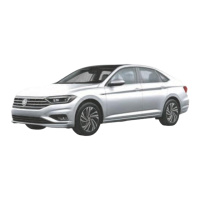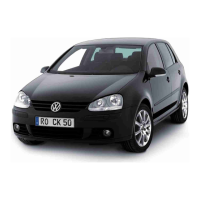A vehicle immobilised on the road carries a
high accident risk for its occupants and other
road users.
•
Stop the vehicle as soon as possible and
safely.
•
Position the vehicle at a safe distance from
road traffic.
•
Switch on hazard warning lights.
•
Never leave anyone inside the vehicle,
especially children or anyone who may need
help. This is
This is particularly important when the doors
are locked. Persons enclosed in the vehicle may
be exposed to extreme temperatures.
very high or very low.
For your own safety, do not ignore this important
checklist, otherwise serious accidents and injuries
may occur.
•
Always follow the operations in the checklist
and always take into account the measures to
be taken.
The following are generally valid security
measures.
Exhaust system components become extremely
hot and could cause fire and serious injury.
•
Never park the vehicle in such a way that any
component of the exhaust system comes into
contact with easily ignitable materials.
The vehicle must be equipped with a fuel tank
and a fuel tank with a fuel tank.
In case of emergency
Please note the legal provisions relating to
The vehicle must be signalled when the vehicle is
stationary. In many countries, for example, it is
mandatory to switch on the emergency inter-
mitters and to wear a reflective waistcoat → p. 62.
Checklist
For your own safety and the safety of those
accompanying you, please observe the following
points in the order given → :
1.
Position the vehicle on suitable ground and at a
safe distance from road traffic → .
2.
Switch on hazard warning lights
→ p. 11.
3.
Engage the electronic parking brake.
4.
Move the gear lever to neutral or the
selector lever to the P position.
5.
Switch off the engine and remove the key
from the ignition → page 119.
6.
Remove all occupants from the vehicle and
take them to a safe place away from road
traffic, e.g. behind the safety fence. Observe
the country-specific regulations regarding the
use of reflective waistcoats.
7.
When leaving the vehicle, never leave a vehicle
key inside the vehicle.
8.
Place the warning triangle to warn other road
users of the presence of the vehicle.
9.
Allow the engine to cool down sufficiently
and, if necessary, seek the assistance of
qualified personnel.
When the hazard warning flashers are switched on,
a change of direction or lane change can be
signalled,
The hazard warning flashers remain switched off
during this time. The hazard warning lights remain
switched off during this time.
The hazard warning flashers must be switched on
,
e.g. in the following situations:
- When preceding vehicles slow down suddenly or
at the end of a traffic jam. This is to warn
vehicles behind.
—
In case of emergency.
—
When the vehicle breaks down.
—
During towing and towing start-up.
Always observe local regulations regarding the use
of hazard warning flashers.
If the hazard warning flashers do not work, warn
other road users of the presence of the damaged
vehicle by other measures, always in accordance
with the legal provisions.
If the vehicle has to be pushed with your hands,
do not allow pressure to be exerted on the rear
light clusters and rear spoiler, or on large sheet
metal surfaces. This can lead to
Take
appropriate
security
measures
relating to their person
and the vehicle

